Catalogue > Liste par artiste
Parcourez la liste complète des artistes présentés dans le cadre des Rencontres Internationales depuis 2004. Utilisez le filtre alphabétique pour affiner vos recherches.
Nicolas Maigret
Catalogue : 2006Phaze work | Art vidéo | 0 | noir et blanc | 5:0 | France | 2005
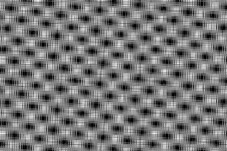
Nicolas Maigret
Phaze work
Art vidéo | 0 | noir et blanc | 5:0 | France | 2005
Séries d?animations basées sur l?effet de mirage et les troubles visuels qui en émanent.
NICOLAS MAIGRET diffuse principalement son travail à travers la vidéo et le son, en s?intéressant notamment aux liens qui unissent ces deux médias. Après avoir terminé ses études aux Beaux Arts de Besançon, il développe son travail à travers différentes pratiques comme l?installation, la composition, la vidéo, le son, la radio ou le multimédia, ainsi qu?à travers des collaborations avec les domaines de la danse, de la performance, du théâtre ou du graphisme. Il a récemment développé une série de pièces autour de la mise en relation de l?image et du son. Basé sur une approche par analogie, son travail se présente essentiellement sous la forme d?installations vidéos, ou de performances.
Elie Maissin, Mieriën Coppens
Catalogue : 2023Et leurs lettres | Documentaire | 0 | noir et blanc | 25:0 | Belgique | 2023
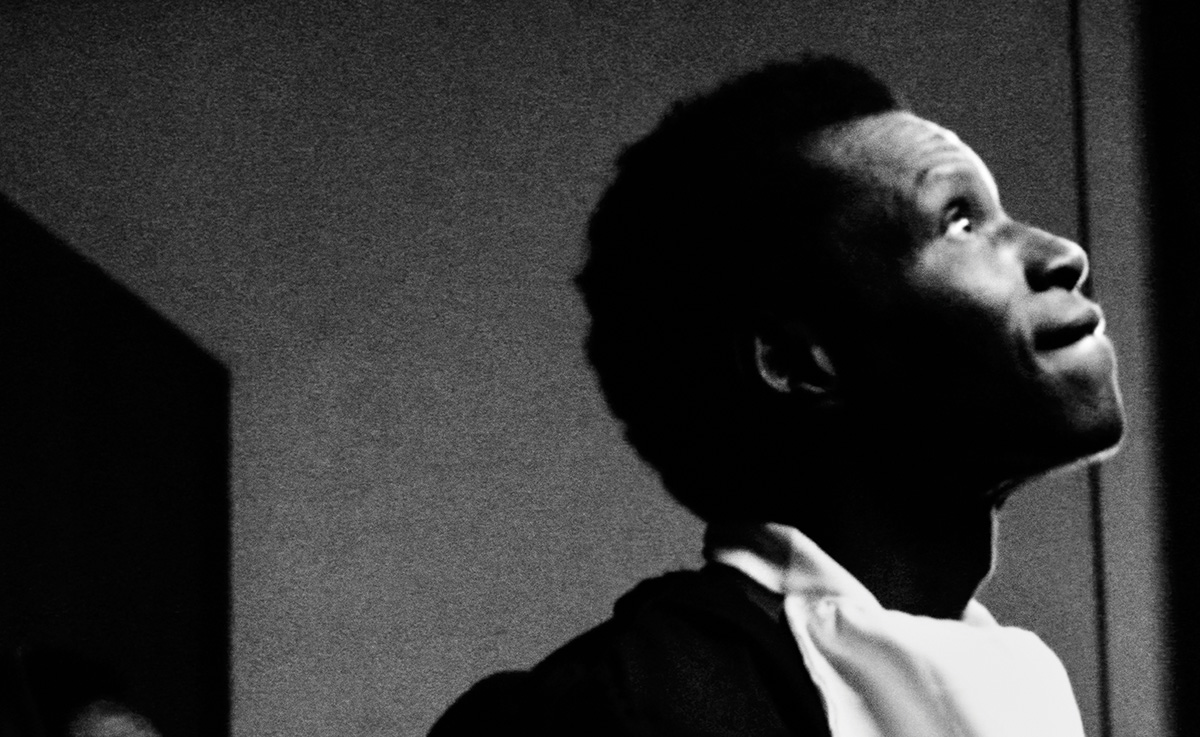
Elie Maissin, Mieriën Coppens
Et leurs lettres
Documentaire | 0 | noir et blanc | 25:0 | Belgique | 2023
Des centaines de lettres de convocation arrivent dans le ba?timent occupe? par La Voix des Sans Papiers. Avec soin, Kande? et Taslim trient et distribuent les lettres aux occupants qui devront comparai?tre devant le tribunal. Les jours se de?roulent comme d'habitude, les occupants restent vigilants. La nuit, dans une pie?ce au fond du couloir, ils re?pe?tent ensemble avec Modou, un occupant aguerri, comment comparai?tre devant un juge. Le jour du proce?s tout le monde se pre?sente au fur et a? mesure, dans les couloirs du tribunal re?sonnent les bruits d’une occupation.
Elie Maissin 1990° et Mieriën Coppens 1992° sont des cinéastes belges. Depuis 2015, ils documentent la lutte du collectif militant bruxellois " La Voix des Sans Papiers ". Depuis sept ans, Elie Maissin et Mieriën Coppens ont réalisé plusieurs courts métrages : Carry On, Almost At Rest, This House, We Are Stubborn, A new street, Caught In The Rain et And Their Letters. Ils recherchent un équilibre entre l'attestation d'une existence réelle et l'évocation d'autres possibilités d'existence.
Elodie Maître
Catalogue : 2007Coïncidence 3 | Vidéo expérimentale | dv | couleur | 6:0 | France | 2005

Elodie MaÎtre
Coïncidence 3
Vidéo expérimentale | dv | couleur | 6:0 | France | 2005
Le phénomène d?ensemble fini des perceptions est une source d?inquiétude pour l?homme qui espère légitimement que les outils technologiques et leurs performances agissent non seulement en médiateur mais en créateur. L?ordinateur additionne, soustrait, multiplie, divise des valeurs de 0 et de 1, à l?infini, tout juste contraint par la puissance de son processeur. J?ai donc émis l?hypothèse qu?une image soustraite à elle-même devenue différente, serait l?image de la différence. Cette opération conduirait, à l?infini, à une image sans détails, à de la lumière ; une image qui serait en quelque sorte imperceptible pour l?homme. J?ai choisi une boucle d?un paysage comportant des évènements récurrents, des plans distincts, des bosses, des creux, des surfaces et des profondeurs, etc. J?ai filmé X fois ce paysage en mouvement avec le plus de rigidité possible, en m?appliquant à enregistrer la même chose que précédemment de manière à laisser advenir les accidents. La superposition progressive de toutes ces pistes vidéo (plus de 2 millions) crée des nouvelles images qui glissent de la représentation analogique à l?image de synthèse en effleurant le langage pictural. Coïncidence 3 rend compte du processus de l?évanescence de l?image, de sa mutation au fil de l?accomplissement de la boucle. Le spectateur est invité à contempler en silence ce paysage et se laisser emporter par l?évanouissement de son regard.
Née en 1980 à Dijon, je vis et travaille à Paris. Après un cursus universitaire d?Art et Spectacle à l?Université de Montpellier, j?ai souhaité intégrer l?Ecole Nationale Supérieure de la Photographie pour développer un travail de recherche et création autour de la très large interrogation «qu?est-ce que l?image, quelles sont ses limites?». Diplômée en juin 2006, je poursuis mon travail avec une direction toujours assez expérimentale, en utilisant la photographie et la vidéo.
Tommy Malekoff
Catalogue : 2020Desire Lines | Vidéo | hdv | couleur | 15:43 | USA, 0 | 2018
Tommy Malekoff
Desire Lines
Vidéo | hdv | couleur | 15:43 | USA, 0 | 2018
Over the course of eighteen months, artist Tommy Malekoff travelled extensively throughout the United States, filming arranged events as well as natural patterns occurring in one of America's most ubiquitous and banal open spaces – the parking lot. His video, titled Desire Lines, is a fifteen minute loop with orchestrated sound that cycles through moments of strange spectacle. These flat, concrete grids behave as stages for all types of activation and rituals, positing a location for expression and a future of meaning.
Tommy Malekoff, born 1992 in South Boston, Virginia, lives and works in New York, NY. His film Desire Lines was exhibited this January at Morán Morán Gallery in Los Angeles.
Malgat Malgat
Catalogue : 2013Z+1 | Fiction expérimentale | hdv | couleur | 5:46 | France | 2012
Malgat Malgat
Z+1
Fiction expérimentale | hdv | couleur | 5:46 | France | 2012
Charlie Malgat est née en 1990. Elle a obtenu en juin 2012 son diplôme national d`arts plastiques aux Beaux Arts de Paris en vidéo. De 2007 à 2010 elle a travaillé en tant qu`assistante décoration sur des tournages à grosse production pour la télévision et le cinéma français. Dès ses 18 ans, elle devient chef décoration pour des publicités, court-métrages et clips. Depuis, son travail vidéo s`articule autour de la machinerie de la fiction et base sa réflexion sur l`expérience cinématographique. Elle tente de mettre en scène des scénarios complexes en focalisant l`action sur les aléas et les conflits provoqués par l`urgence du tournage. Aussi, elle a participé au prix des Amis des Beaux Arts 2012, une association privée parrainée par d`Agnès B et Thaddaeus Ropac.
Arun Mali
Catalogue : 2023Krzywy Las | Vidéo | mov | noir et blanc | 3:40 | France | 2022

Arun Mali
Krzywy Las
Vidéo | mov | noir et blanc | 3:40 | France | 2022
Cette vidéo met en scène « La forêt aux arbres tordus » qui se situe en Pologne en bordure de la frontière nord allemande. À travers ce travail, j’observe la façon dont les traces d’un passé venant d’une légende ou d'un mythe, existent encore dans un temps contemporain. Cette forêt interroge et génère une forte dimension mystique, mystérieuse, imaginative et narrative. Est-ce une trace de la guerre, de la sorcellerie ou l’énergie d’un lieu qui a tordu si mystérieusement ces arbres ? Ou est-ce simplement l’action des Hommes ?
Artiste et réalisatrice, mon travail de l’image se situe entre la fiction, le cinéma documentaire et la vidéo d’art. Il questionne et explore les espaces en marges, en mouvements ou en conflits. Il interroge la façon dont l’être humain déraciné et déplacé arpente des zones de passages et de frontières, une façon mouvante d’habiter le monde, parfois fragile. J’explore les croyances, les rituels et les mythes dont les hommes se nourrissent pour vivre, survivre et construire leur identité.
Catalogue : 2022Sans-titre | Vidéo | 4k | couleur | 2:50 | France | 2021
Arun Mali
Sans-titre
Vidéo | 4k | couleur | 2:50 | France | 2021
Janvier 2021. Le musée était vide. L’exposition en cours se retrouvait portes closes, abandonnée du regard de ses spectateurs. Seule le vide et le silence, cruels, morbides, habitaient encore cet espace devenu angoissant.
Artiste et réalisatrice, mon travail de l’image se situe entre la fiction, le cinéma documentaire et la vidéo d’art. Il questionne et explore les espaces en marges, en mouvements ou en conflits. Il interroge la façon dont l’être humain déraciné et déplacé arpente des zones de passages et de frontières, une façon mouvante d’habiter le monde, parfois fragile. J’explore les croyances, les rituels et les mythes dont les hommes se nourrissent pour vivre, survivre et construire leur identité. Je présente mes films dans de nombreux festivals de cinéma, dont Clermont-Ferrand – Cabourg – St. Petersbourg – Pantin – Cinémathèque française – Festival Tous Courts d’Aix-en Provence où je reçois le Prix du Jury – Le coup de coeur du jury au Festival Point Doc ou encore la Mention Spéciale au Festival de Contis. Je vends mon court-métrage de fiction “Feux” à Arte et au programme Le Radi. En 2019 je présente mon long-métrage documentaire “La maison” à Visions du Réel à Nyon, film lauréat du Sesterce d’Or Canton de Vaud, meilleur film de la compétition internationale Burning Lights. En 2019 je présente une sélection de mes travaux lors d’une exposition personnelle au sein de l’exposition Futur, ancien, fugitif au Palais de Tokyo avec la collaboration de Claire Moulène. En 2020, je présente une exposition personnelle au FOAM Museum 3H, Amsterdam, avec la collaboration de Hinde Haest. Entre 2020 et 2022 : Centre Phi, Montréal – CEAAC, Strasbourg – Art Genève, Suisse – FRAC Champagne-Ardenne – MAMCS, Strasbourg – Abbaye de Maubuisson, CNAP – Institut Français, Kyoto et Tübingen – Biennale de Montrouge JCE – Shadok, Strasbourg – Around vidéo, Lille – Refresh, Bretagne – Fondation EDF / Le Credac. Je suis également invitée à montrer mon travail lors de la prochaine Biennale de Lyon 2022 par les commissaires Till Fellrath et Sam Bardaouil.
Daryna Mamaisur
Catalogue : 2023I Stumble Every Time I Hear From Kyiv | Documentaire | mov | couleur | 17:17 | Ukraine | 2022

Daryna Mamaisur
I Stumble Every Time I Hear From Kyiv
Documentaire | mov | couleur | 17:17 | Ukraine | 2022
“I have no words to say” is the phrase one can often hear when the reality of the war is so striking that language seems to be incapable to describe it. While studying in Brussels, Daryna Mamaisur is caught up in the russian full-scale invasion of her country. In the springtime, when chestnut trees are blooming at the same time in Brussels and Kyiv, she makes a film capturing that spring in the distance. Keeping a visual correspondence with a friend from Kyiv, she faces the question: while making a film about war, how to speak about the wound that is fresh and ongoing?
Daryna Mamaisur is a visual artist and filmmaker, born in Kyiv, Ukraine. Having a background in art theory and philosophy, she developed her practice at the intersection of different disciplines. Her works were related to transformations of public space, and landscape due to their connection to visual culture and memory. Besides, she is particularly interested in situations when language and vocal expression appear fragile and incapable of seizing reality. In 2022, she graduated from the DocNomads, a joint master’s program in documentary filmmaking, based in Lisbon, Budapest and Brussels. Her films participated in the film festivals as Kassel Dokfest, Visions du Réel, FIDMarseille, Docudays UA etc.
Viviana Mamani Cori
Catalogue : 2026Cristóbal Condori: Una Nariz de Ficción | VR expérimental | 4k | couleur | 7:12 | Bolivie | 2025
Viviana Mamani Cori
Cristóbal Condori: Una Nariz de Ficción
VR expérimental | 4k | couleur | 7:12 | Bolivie | 2025
Il y a presque quatre ans, le collectif Wiphala a escaladé la statue de Christophe Colomb à La Paz, en Bolivie, et lui a brisé le nez d’un seul coup. La même année, ma sœur a subi une opération esthétique pour changer le nez hérité de notre père — mais à sa sortie du bloc opératoire, elle ne se reconnaissait plus dans le miroir. À El Alto, en Bolivie, une tendance croissante à la rhinoplastie vise à modifier ce que beaucoup appellent le « nez de condor », portée par des cliniques proposant des réductions et par un paysage urbain saturé de panneaux publicitaires, de mannequins et d’affiches montrant des visages blancs, des cheveux clairs et des nez retroussés. La statue de Christophe Colomb prend vie après avoir été frappée au nez. Désorientée, elle erre dans les rues d’El Alto, revisitant son passé et confrontant le contraste entre sa mémoire coloniale et la présence des corps autochtones qui habitent la ville. Au fil de son parcours, elle explore sa propre identité fracturée et celle de la ville, jusqu’à se retrouver face à face avec le buste d’un homme aymara, porteur d’une esthétique et d’un imaginaire chola. Cette rencontre symbolise la résistance aux canons hégémoniques de beauté et la possibilité de réécrire l’histoire depuis une perspective décoloniale. L’expérience se déploie en réalité virtuelle, permettant au·à la spectateur·rice d’accompagner la transformation de la statue — et une réconciliation avec nos propres nez.
Viviana Mamani Cori est une artiste aymara, migrante, à la peau brune, née à El Alto, en Bolivie. Sa pratique émerge d’une formation non académique façonnée par la migration, la rue et les esthétiques populaires de l’Altiplano, où l’architecture chola et les DVD piratés ont modelé dès tôt sa sensibilité pour le glitch, le bruit et les images clandestines. Elle a ensuite poursuivi des études en architecture et en cinématographie, élargissant sa pratique au cinéma expérimental, à la photographie, à la performance et aux nouveaux médias. Son travail tisse archives intimes, mémoire territoriale et gestes incarnés qui confrontent les récits coloniaux autour de la beauté, de l’identité et de la représentation autochtone. Elle a réalisé des œuvres qui ont circulé dans la rue, dans des espaces communautaires, des galeries et des festivals à travers l’Amérique latine et l’Europe. Elle a été sélectionnée pour Berlinale Talents Buenos Aires 2022 et a participé à la résidence artistique DIP en 2024, où elle a bénéficié de l’accompagnement de cinéastes latino-américaines de premier plan telles que Lucrecia Martel et Maite Alberdi. Son projet Cristóbal Condori: Una nariz de ficción a reçu de nombreuses distinctions en photographie, art contemporain et cinéma expérimental. En 2025, elle reçoit le Prince Claus Seed Award pour une trajectoire explorant l’identité, la migration, la mémoire et le corps comme territoire politique de résistance. Elle vit aujourd’hui à El Alto, en Bolivie, où elle poursuit et développe sa pratique artistique.
Calin Man, calin man
Catalogue : 20135 ready media files by Vasile Carlova | Netart | hdv | couleur | 11:27 | Roumanie | 2012
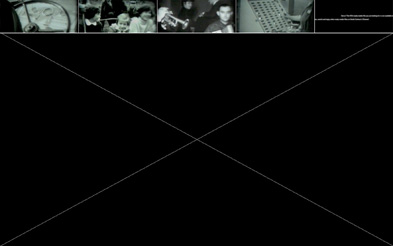
Calin Man, calin man
5 ready media files by Vasile Carlova
Netart | hdv | couleur | 11:27 | Roumanie | 2012
5 ready media files by Vasile Carlova film by calin man a.k.a. reVoltaire duration: 11:27 min year: 2012 a project initiated by Ion Dumitrescu and Stefan Tiron based on unused soundtrack by Rodion and rare footage by reVoltaire and Zsiga Ioan. dedicated to the fabulous poet Vasile Carlova. track list: 1_ Trip departure. {Marșul oștirei române / Romanian Military March} 2_ La Debel A Gora. {Înserarea / Eventide} 3_ Carnival in Sanicolaul Mic. {Ruinurile Târgoviștii / Ruins of Târgoviște} 4_ Heroes: Jakob & Johann Schmeltzer and A Short Visit At The Shoe Factory "Libertatea" . {Rugăciune / Prayer} 5_kapet. {Păstorul întristat / The sad shepherd} * Vasile Carlova 1809 - 1831 - romanian poet. he wrote only 5 poems: 1. Romanian Military March; 2. Eventide; 3. Ruins of Târgoviște; 4. Prayer; 5 .The sad shepherd. * Rodion SA - experimental new wave band with no albums released (early 80`s). * Zsiga Ioan - amateur filmmaker from Sanicolaul Mic (late 60`s). * Mikalaka Aesotheric and Second Administration - part of Esoth Eric project (since 2000) by calin man * the term ready media was coined by reVoltaire / kinema ikon (1995)
calin man b.: 1961; place of residence: Arad, Romania. education: B.A. in literature, Timisoara University, Romania; chief-editor and designer of intermedia magazine; member of kinema ikon group. net.art work and interactive installations exhibited at: Venice Biennial, Centre Pompidou, Sao Paulo Biennial, FILE Sao Paulo, EMAF Osnabrueck, ISEA Liverpool and Paris, Rencontres internationales Paris/Berlin, Cornell University NY, d>art Sydney etc.
Melanie Manchot
Catalogue : 2025Liquid Skin | Doc. expérimental | hdv | couleur | 23:19 | Allemagne | 2023
Melanie Manchot
Liquid Skin
Doc. expérimental | hdv | couleur | 23:19 | Allemagne | 2023
Filmed between dusk and dawn, Liquid Skin was filmed with nine women, who all perform night-time labour, across a wide variety of professions, including a baker, pole dancer, care worker, nightclub owner, cleaner etc. These women take us on a tour of night-time working environments, linked by history, economics and events shaping the post-industrial landscape of the Ruhr region in Germany. Through this choice of locations, the work links the nocturnal with questions on the subterranean, which is so present across this region with its thousands of kilometres of quiet tunnels underneath. The video consists of long, mostly single shot sequences each guided by one protagonist. Filming in black & white Infrared gives both the locations and the people a slightly abstracted and ghostly appearance, calling into question the specificity of each situation. Sound is integral to this work as it references industrial, technological, subterranean sounds of coal mining histories. The soundtrack is constructed from field recordings captured in each location but used in a non-diegetic way that consciously avoids synch sound. Visually the work aims to cross the dreamlike counter-logic of Lynch with urban spaces that may evoke Tarkovsky, Lang’s Metropolis or drawings by Escher.
London-based artist/filmmaker Melanie Manchot employs photography, film, video and sound to form sustained enquiries into our individual and collective identities. The work interrogates and employs acts of care, resistance and communality to engage in discourses on social and political urgencies of our societies. Her films investigate innovative forms of storytelling with an acute understanding of the power of filmmaking to speak to urgent issues and have profound impact. Manchot’s first feature film, STEPHEN, commissioned by Liverpool Biennial, addresses gambling, substance misuse, recovery and mental health through narrative fiction and documentary. It had its cinematic release through Modern Film in 2024 and continues to be shown in exhibitions as a multi-channel installation. Manchot is working towards her second feature film: Mount Makalu. She is shortlisted for the Jarman Award, UK. Her work is held in many public collections and was presented in a major survey show at museum MAC/VAL, Paris 2018. Selected solo exhibitions: STEPHEN, The Exchange, Penzance, 2024; Alpine Diskomiks, Parafin, London, 2022; Black Snow White Out, Museum Lumen, Italy, 2021; Mountainworks (Montafon), InnSitu, Innsbruck, Austria (2019); Open Stage/Back Stage, Kunsthaus Pasquart, Switzerland (2019); She completed her MA in Photography at The Royal College of Art in London in 1992.
Melanie Manchot
Catalogue : 2026Line Of Sight (The Tower) | Vidéo | 0 | couleur | 12:7 | Allemagne, Suisse | 2025
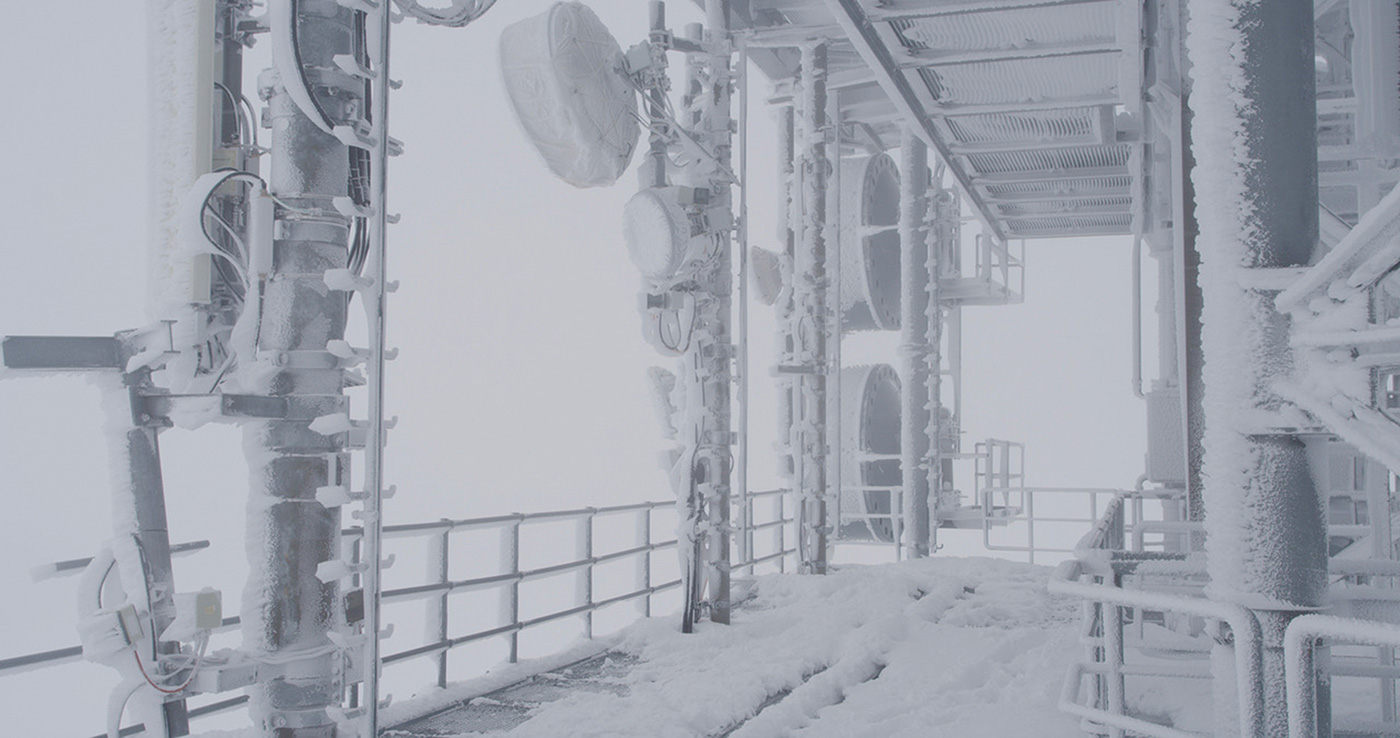
Melanie Manchot
Line Of Sight (The Tower)
Vidéo | 0 | couleur | 12:7 | Allemagne, Suisse | 2025
Tournée dans une tour de télécommunications désaffectée, autrefois abritant des équipements militaires secrets, cette œuvre prolonge mon enquête sur les montagnes et leurs architectures en tant qu’espaces d’enchevêtrements entre humains et milieux naturels. Elle revient plus précisément encore au village alpin d’Engelberg, où je réalise des travaux depuis 2010. Dans Line of Sight, la caméra explore une structure désertée, un espace laissé derrière. Comme si chacun avait quitté les lieux en plein geste, les environnements portent les traces d’une vie passée, depuis longtemps disparue. À l’intérieur comme à l’extérieur, la caméra observe cette architecture déroutante au fil de longs panoramiques et travellings, jusqu’à un moment d’envol qui dévoile la structure — comme flottant dans l’espace. Lorsque la tour était en fonction, elle assurait de multiples usages, notamment celui d’abri et de refuge durant les tempêtes. Une pièce remplie de vieux matelas témoigne de ces moments de danger. Le titre Line of Sight renvoie à ces tours perchées au sommet des montagnes, se faisant face à distance et permettant d’anciennes formes de communication. Avec l’évolution technologique, ces tours sont désormais des dinosaures : solitaires, obsolètes, devenant ainsi des symboles d’endurance, de résistance et de modes d’échange révolus. En 2025, cette tour est en cours de transformation en un espace dédié au « divertissement de montagne » — accentuant la dichotomie d’industries alpines qui ne cessent d’accroître la fréquentation des sommets et des glaciers, contribuant de fait à l’accélération du changement climatique.
Artiste visuelle et cinéaste basée à Londres, Melanie Manchot utilise la photographie, le film, la vidéo et le son pour mener des enquêtes approfondies sur nos identités individuelles et collectives. Son travail interroge et mobilise des actes de soin, de résistance et de communalité afin d’engager les urgences sociales et politiques de nos sociétés. Ses films explorent des formes innovantes de narration, portés par une compréhension aiguë du pouvoir du cinéma à traiter des enjeux cruciaux et à produire un impact profond. Toutes ses œuvres filmées reposent sur une recherche ancrée dans des lieux spécifiques, et les paysages montagneux constituent un motif récurrent permettant d’aborder la fragilité des environnements dont nous avons la charge. Les œuvres de Manchot ont été présentées dans des expositions en musées et galeries à l’international, et elle prépare actuellement une vaste exposition personnelle au Royaume-Uni pour le début de l’année 2026. Son premier long métrage, STEPHEN, commandé par la Liverpool Biennial, aborde le jeu d’argent, les addictions, la guérison et la santé mentale à travers une articulation entre fiction narrative et documentaire. Distribué en salles par Modern Film en 2024, il continue d’être présenté en exposition sous forme d’installation multi-écrans. Manchot travaille actuellement à son deuxième film, Self Storage, tandis qu’un autre long métrage – un hybride fiction/documentaire intitulé One Day As A Tiger, est en développement.
Michael Mandiberg
Catalogue : 2007All haiku, all the time | Vidéo expérimentale | dv | couleur | 3:30 | USA | 2005

Michael Mandiberg
All haiku, all the time
Vidéo expérimentale | dv | couleur | 3:30 | USA | 2005
Un studio d'information,24 heures sur 24, vide, luit en silence sur un écran. L'arrière-plan est figé, mais le téléscripteur de nouvelles continue de taper haiku dans la nuit.
Michael Mandiberg est un artiste, programmeur d'ordinateur et un drôle d'économiste qui se sert de l'Internet, la vidéo et de la performance pour explorer la subjectivité, le travail et le commerce. Son travail en cours s'emploit à des "plug-ins Firefox et s'ouvre sur des plate-formes API afin de nous éclairer sur les coûts réels de l'économie mondiale pour l'environnement. Ses projets les plus récents sont "Oil Standard", un navigateur plug-in qui convertit tous les prix de n'importe quelle page de web dans leur valeur, l'équivalent en barils de pétrole, et "All Haiku, All the time", une vidéo d'un studio d'informations vide (24 heures sur 24), avec haiku défilant le long du télescripteur de nouvelles. En 2001, il distribua des copies parfaites faites à partir d'autres copies (AfterSherrieLevine.com), et il mit tous ses biens en vente sur Shop Mandiberg (Mandiberg.com/shop). Son oeuvre est exposée et analysée internationalement. Il vit et surtout en bicyclette violette dans le quartier de Brooklyn.
Stephanos Mangriotis, Alex Frigout, Gaël Marsaud
Catalogue : 2021O Terra, Addio | Doc. expérimental | mov | couleur | 7:48 | Grèce, France | 2020
Stephanos Mangriotis, Alex Frigout, Gaël Marsaud
O Terra, Addio
Doc. expérimental | mov | couleur | 7:48 | Grèce, France | 2020
Une immersion dans les eaux sauvages et mystérieuses du Carnaval Indépendant de la Plaine et de Noailles. Sur fond d’aménagement de Marseille, les foules carnavalesques se cherchent, basculent, s’entrelacent. Des bras déchirent le présent et la foule part à l’assaut de l’hiver.
Alexandre Frigoult est ingénieur du son et monteur son. Bercé dès son plus jeune âge par le monde vibratoire et musical des chants de sa mère lorsqu'elle passait l'aspirateur, il peaufine en parallèle son oreille à l'école de musique d'à côté. Il étudiera par la suite l’ethnomusicologie à l'université Paris 8 Saint-Denis (France) et se passionnera pour le pouvoir narratif sonore lors de sa formation à l'ESAV - École Supérieure d'AudioVisuel, Toulouse (France). Actuellement ingénieur du son et monteur son pour le cinéma, il collabore aussi à d'autres formes telles que la musique, la radio et le spectacle vivant. Stephanos Mangriotis est photographe, réalisateur et chef opérateur. Il est né à Athènes (Grèce). Il a d’abord étudié les mathématiques et la philosophie à Bristol (Royaume-Uni), puis la photographie à Paris 8 - St. Denis (France). Dans son travail, il utilise l’image et les formes multimédias pour créer des récits autour des frontières, des migrations et du sentiment "d’entre-deux". Il aime bien prendre le temps de comprendre et discuter avec les gens avant de déclencher son appareil. Il est co-fondateur de la plateforme Dekadrage avec laquelle il élabore des projets depuis 2009. Gaël Marsaud est sociologue indépendant et vidéaste. Né en Guadeloupe en 1984, il est titulaire d'un doctorat en science politique à l'Université Paris 8 (France). Sa thèse consacrée à un ensemble de films documentaires tournés à Marseille (France) et Saint-Denis (France) au début des années 2000 aborde les questions suivantes: Comment les réalisateurs, leurs équipes et les publics politisent voire dépolitisent leurs films? Comment appréhender la fabrique collective des documentaires? Quelle méthode mobiliser pour analyser ces images? Comme vidéaste, il s’intéresse aux luttes et pratiques d'auto-organisation, là où elles sont les moins attendues et pourtant bien vivantes. Réalisées collectivement, ces chroniques vidéo donnent à voir Marseille et ses résistances.
Barbara Marcel
Catalogue : 2018Arara | Vidéo | 4k | couleur | 9:36 | Brésil, Allemagne | 2017
Barbara Marcel
Arara
Vidéo | 4k | couleur | 9:36 | Brésil, Allemagne | 2017
A forest. A cave. A woman and her bird skin. A body animated by past and future lives. Film Credits Actress: Liana Lessa Screenwriter and Director: Barbara Marcel Cinematographer: Rodrigo Levy Sound Mixing: João Polido
Barbara Marcel (Rio de Janeiro, 1985) is an artist and filmmaker, interested in the cultural roots of nature and the problematic heritage of colonial imagery. In her current artistic research PhD at the Bauhaus-University in Weimar, Marcel investigates the essayfilm as a historiographical tool for decolonial thinking with and through images, with the Botanical Garden Berlin-Dahlem and its tropical plants being her current material of study. Barbara Marcel is a scholarship holder of the Heinrich Böll Foundation and lives in Berlin.
Charlène Marchand
Catalogue : 2012L'attaque des clones | Vidéo | dv | couleur | 1:2 | France | 2009
Charlène Marchand
L'attaque des clones
Vidéo | dv | couleur | 1:2 | France | 2009
Série de phénomènes de rues.
Charlène Marchand est née en 1985 à Nancy, vit et travaille à Nancy. Après une année en Mise à niveau en Arts Appliqués, elle décide de développer sa pratique artistique en intégrant l?École des Beaux-arts de Metz pendant 5 ans, obtenant son DNSEP. Sa production s?emparant notamment des images du quotidien, elle s?oriente par la suite dans un Master cinéma et audiovisuel intitulé «filmer le réel» à l?IECA à Nancy. En parallèle et depuis 2007, elle s?investit en tant que reporter photo/vidéo au sein de l?association Monptidoi. "Comme écrit Pierre Tilman à propos de Robert Filliou, je tente de « donner une charge de sens aux actes de la vie ordinaire ». Ainsi, mon travail s?articule autour du quotidien, sa banalité, ses accidents et ses dérapages ; comme une peinture des choses qui nous entourent, traitée avec humour, ironie et/ou sensibilité. A travers des médiums tels que la photographie, la vidéo et l?édition notamment, je développe un travail où la notion d?association est quasi omniprésente : association d?images, de situations, d?états des choses? Partant d?une observation, d?un regard singulier sur le quotidien, mes images, issues d?une collection, créent du sens en se confrontant et proposent une dimension inopinée?"
Guilherme Marcondes
Catalogue : 2007Tyger | Animation | dv | couleur et n&b | 4:30 | Brésil | 2006

Guilherme Marcondes
Tyger
Animation | dv | couleur et n&b | 4:30 | Brésil | 2006
A giant tiger mysteriously appears in a big city. It will reveal the hidden reality in an otherwise ordinary night.
Guilherme Marcondes was born in São Paulo, Brazil. He started working as an illustrator when he was still in Architecture school. In 2000 Guilherme went to the Brazilian animation studio Lobo where he worked for five years for clients such as Diesel, Cartoon Network, and Nickelodeon. After that he spent some time in London directing the build-up campaign for the Europe Music Awards 2005 for MTV Networks and then went back to São Paulo as a freelancer. Guilherme Marcondes is currently working at Motion Theory in California and directing short-films.
Shahar Marcus, Daniel Landau
Catalogue : 2014Seeds | Vidéo expérimentale | hdv | couleur | 5:3 | Israel | 2012
Shahar Marcus, Daniel Landau
Seeds
Vidéo expérimentale | hdv | couleur | 5:3 | Israel | 2012
The work ?Seeds? explores the phenomenon of the buried mines that exist in Israel and the world over, exposing how these areas still carry the consequence of the war within their soil while supporting the new populations who must inhabit the conflict area. It examines the power of the present moment in these places where efforts are beginning to shift these death zones into places that consciously affirm life, embracing continuity in the very place where it once was blocked.
Shahar Marcus (b. 1971) is an Israeli based artist who primary works in the medium of performance and video art. His initial works dealt with the exploration of his own body and its limitations‐ incorporating various perishable materials, such as dough, juice and ice. His body served as an instrument, a platform on which various ?experiments? took place: lying on the operating table, set on fire, dressed in a ?bread suit? and more. Food is also a major theme in Marcus?s works. For instance, his recurrent use of bread as a symbol of essentiality and survival is juxtaposed with military symbols. By working with food, a perishable, momentary substance and by turning it into a piece of clothing or a set, Marcus also flirts with art history; transforming arbitrary objects and materials into something immortal and everlasting. His early video‐performances feature himself along with other artists, with whom he had collaborated in the past. However, in his recent works, Marcus appears by himself, while embodying different roles and characters. ?The man with the suit? is a personage that was born from an intuitive desire to create a ?clean‐cut? version of an artist, juxtaposed to the common visual stereotype of the artist as a laborer. Drawing influence from Magritte?s familiar figure‐ the headless suit, a symbol of Petite bourgeoisie, Marcus embodies this man with a suit as an artist who is in charge, a director. His most recent works deal with local political issues, by approaching iconic Israeli landmarks with a critical and humorous point of view. Thus, Marcus reflects on his own heritage, environment and the creation of local historical narratives. His works are influenced by the visual language of cinematography along with familiar themes and tributes to art ? history and artists, such as Ives Klein, Paul McCarthy, Peter Greenway and Jackson Pollack. *Shahar Marcus is an active artist for over a decade and has exhibited at various art‐ institutions, both in Israel and around the world, including: The Tate Modern ,The Israel Museum, Tel Aviv Museum of Art, Petach Tikva Museum of Art , Charlottenburg, Copenhagen‐ Kunsthalle , Moscow Biennale, Poznan Biennale, Moscow Museum of Modern Art and at other art‐ venues in Poland, Italy, Germany, Georgia, Japan, the USA and Turkey. Many of his works are a part of various important collections, such as The Israel Museum, Tel Aviv Museum of Art, Petach Tikva Museum of Art as well as art‐ intuitions in Poland and Italy.
Elke Marhöfer
Catalogue : 2015prendas - ngangas - enquisos - machines {each part welcomes the other without saying} | Doc. expérimental | 16mm | couleur | 25:50 | Allemagne, Cuba | 2014
Elke MarhÖfer
prendas - ngangas - enquisos - machines {each part welcomes the other without saying}
Doc. expérimental | 16mm | couleur | 25:50 | Allemagne, Cuba | 2014
A film shot in Cuba. Not an anthropological film, nor a narrative documentary or a film essay, but certainly a film concerned with foreignness and difference. Mostly shot in the hilly communes of Yateras, searching for long disappeared clandestine settlements, so-called palenque, where African slaves, Taínos and Chinese forced laborers, freed themselves from colonial violence, the film narrates a sense of place, which is real and imaginary at the same time. It questions, if it possible to communicate something of the soul of a place, steeped in histories of revolution and dissidence, without relying on didacticism or storytelling, without taking recourse on hierarchical distinctions between the ordinary and the extraordinary, the animate and the inanimate, the macro and the micro? Wondering what heritage (colonial) anthropology leaves behind, or rather, if it is possible to escape from the systems of signification that constitute foreignness, without getting detached from the palpable realities of the world? What if there was a way to approach the foreign by relying on the affects of the world that pass through us, giving way to perceptive cartographies, mapping out nameless intensities and collective sensitivities, leaving space for the non-human, including vegetables and animals that colonized the New Land? In this film, Cuba does not appear as an “outside” to a “Western” inside, but as a sensible texture without anchor or vanishing point, where humans are a part of the composition rather than the principal element.
Elke Marhöfer, born in the year of the goat in Baracoa/Cuba, studied Fine Art at the University of the Arts in Berlin, at the School of the Art Institute of Chicago and at the Whitney Independent Study Program in New York City. Via the potentialities of moving image and suppositious writing Marhöfer works with notions of self-admitted foreignness, radical othering, heterogeneous perceptions of time, the ahistorical and disorientations of narratives. She revises notions of animal, vegetal and object relations. Since 2010 she pursues a PhD at the University of Gothenburg. Projects have received fellowships, grants, and generous support from Courtisane Festival Ghent, Images Film Festival Toronto, IASPIS Residency, Whitney Independent Study Program, Cité des Art International Paris. Art exhibitions include the Manufactura`s Studio Wuhan, FCAC Shanghai, the Houston Museum of Fine Arts, Museum für Gegenwartskunst Siegen and The Showroom, London.
Pablo Marin
Catalogue : 2025Materia vibrante | Film expérimental | 16mm | noir et blanc | 6:45 | Argentine | 2024
Pablo Marin
Materia vibrante
Film expérimental | 16mm | noir et blanc | 6:45 | Argentine | 2024
In search of traces and imprints of an absence, this film examines the coexistence between nature and man-made structures or artifacts, to deliver a formal object of commemoration. An obscure celebration of the surface of a fractured and exhausted world, what could have been a city symphony evokes instead the feeling of a mausoleum for our present existence.
Pablo Marín is a filmmaker and writer. As an independent researcher and curator, he has presented programmes on Argentinean cinema in the United States, Canada, Spain, Austria, Finland and Switzerland. He has translated books by Jonas Mekas, Stan Brakhage and John Waters, among others, and his volume on Argentine experimental cinema, Una luz revelada. El cine experimental argentino, was published in both Argentina and Spain by La Vida Útil in 2022. His film Resistfilm (2014) won the best Avant-Garde Film at Filmadrid, and his latest, Trampa de luz (2021), was awarded the Principal Online Prize of the International Short Film Festival Oberhausen.
Ivan Marino
Catalogue : 2006Five pictures of a Seated Woman | Doc. expérimental | dv | couleur et n&b | 23:0 | Argentine, Espagne | 2005
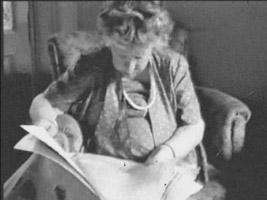
Ivan Marino
Five pictures of a Seated Woman
Doc. expérimental | dv | couleur et n&b | 23:0 | Argentine, Espagne | 2005
"Ce documentaire poétique, réflection profonde sur le temps et la mort, retrace les 5 dernières années da la vie d'une femme. On peut la voir dans des situations, des scènes de tous les jours, tricotant, mangeant, dormant." Festival International de la Vidéo d'Art Electronique, Brésil. "Poderosa reflexão sobre o tempo e a morte, o documentário poético acompanha os cinco últimos anos de vida de uma mulher, com registros de situações corriqueiras, em que ela aparece tricotando, comendo, cochilando." Festival International de Arte electronica Videobrasil
Iván Marino, réalisateur vidéo et artiste multi-média, est né en Argentine en 1968. Durant son activité professionelle il a été professeur dans différentes universités: nationales et internationales. En 1977, il fut invité au Filminstitut (HDK- Hochschule der Künste, à Berlin) en tant que professeur- visiteur pour étudier la forme documentaire. De 1997 à 1998 il fut professeur en visite à l'Université de Californie à Los Angeles (Département Film et TV), où il se spécialisa dans l'Art Digital. En 1999 il reçut un prix du Centre d'Art et Design MECAMedia (Ecole Supérieure de Design, Université Ramón Llull) pour la recherche et la réalisation d'art du média. Depuis, il vit à Barcelone. Il s'occupe actuellement de plusieurs cours d'Art Electronique et de Design Digital (Université ESDI Ramón Llull). Il donne aussi des cours de Système de Design Interactif pour programme de maitrise internationale et collabore avec des professeurs de l'Université Pompeu Fabra, à Barcelone(IUA).Iván Marino a été aussi en charge de séminaires tout en assurant des cours d'éducation dans différentes universités en Argentine (Universidad Nacional 3 de Febrero, Universidad Blas Pascal),en Colombie (Universidad Nacional de Cali, Universidad de Caldas),tout comme d'autres centres académiques. Durant sa carrière professionelle, il a créée pour le cinéma, la vidéo et les moyens interactifs, tels que le Web ou l'internet en général. Son oeuvre a été présenté dans différentes manifestations internationales et a reçu des prix aux festivals d'Hannover (Festival du Film International, Allemagne,1997), BHZ Brésil (Belo Horizonte, Brésil, 1995), Videobrasil (San Pablo, Brésil, 1997), Festival du Film de Buenos Aires (Sueños Cortos, Argentine, 2003), pour n'en citer que certains. Il a reçu des financements de la part de la Fondation Rockefeller, MacArthur (Etats-Unis), Fondation Antorchas (Argentine), Goethe Institut (Berlin), et reçut un prix du ZKM (Centre pour l'Art et Média, Karlsruhe, Allemagne) ainsi que de l'Université de Californie, Los Angeles (UCLA). source: La Caixa
Franco Marinotti
Catalogue : 2007PLAY Gallery | 0 | 0 | | 0:0 | Suisse, Allemagne | 2007
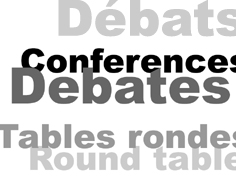
Franco Marinotti
PLAY Gallery
0 | 0 | | 0:0 | Suisse, Allemagne | 2007
PLAY est une galerie et un showroom pour des projets artistiques, révélant à quel point le cinéma, la vidéo et l'art s'influencent réciproquement. Loin des distinctions classiques de genres, de nouveaux langages narratifs et visuels constituent une alternative au flot d'images et à la publicité à caractère subliminal diffusés dans les mass médias traditionnels. Le but et le principal intérêt de cette galerie résident principalement dans la transformation des modèles visuels du visiteur et du spectateur autant que des modes de perception, afin de l'inviter et de le fasciner de manière positive. Dans cette perspective, PLAY invite les artistes, les directeurs et les cameramen à présenter les idées de leur projet qui seront ensuite réalisées pour cet espace. Le savoir-faire technique, et les fondements théoriques du projet sont considérés comme aussi importants l'un que l'autre. C'est pourquoi, une emphase toute particulière est donnée à la coopération avec les universités et les académies afin d'élaborer ce type nouveau de conception durant des ateliers, avec la participation des élèves et des professeurs. Dans ce même contexte, les meilleurs "offs" provenant de festivals sont présentés sur des écrans et examinés par des spécialistes.
Franco Marionetti a fondé la société de production cinématographique et d'édition de livres d'artistes, "Fine Arts Unternehmen Ag" en 1999, à Zug, en Suisse. En 2000, il a ouvert "Artinprogress", un espace d'exposition à Berlin et en 2002 il a ouvert la "PLAY_gallery" consacrée aux images fixes et en mouvement à Berlin, pour se concentrer sur la vidéo et le cinéma. En 2003, il a lancé Fair Play, un festival annuel de vidéo et de cinéma à Berlin. En 2007, il a commencé le projet ?Mera Coincidencia?, à Lisbonne, en collaboration avec l'artiste Javier Penafiel.